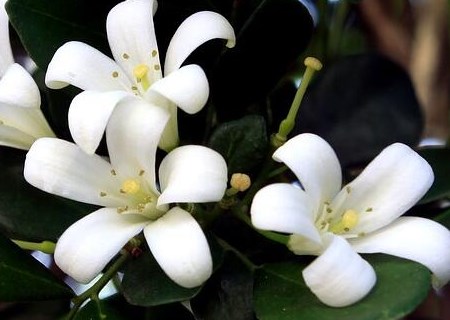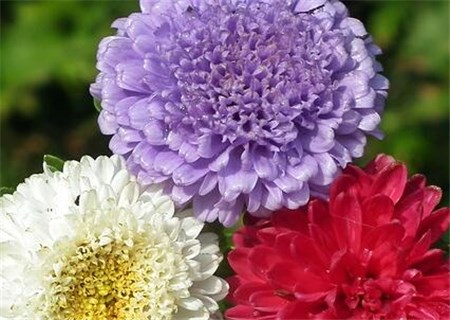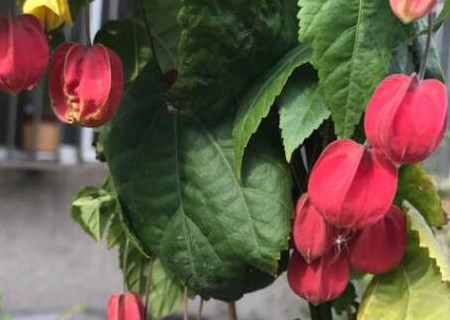What are the seed planting methods of perennial woody jasmine? Do you lose leaves in winter? What's the use?
Silver jasmine is a perennial woody plant with many capillary roots, branches and branches, long and slightly drooping, white flowers, fragrant flowers, long flowering period and continuous blooming. So what do you know about the methods of planting silver jasmine seeds? Do you lose leaves in winter? What's the use?

First, the planting method of silver jasmine seed
1. Environment and light
Jasmine is fond of hot, humid, ventilated and breathable environment and needs sufficient light. Jasmine is afraid of the cold. Potted jasmine in the south can be cultivated outdoors to survive the winter. In the north, it is necessary to keep warm in autumn and winter, and move indoors and put it toward the south. If the light is strong, the branches are strong, the leaves are dark green, the flowers are many and fragrant, and if the sun is not enough, the flowers are sparse and not fragrant.
2. Moisture
Jasmine is not resistant to drought, but avoid stagnant water, rainy season should be timely dumping stagnant water in the basin, otherwise the leaves are easy to yellowing. In summer, hot and sunny days should be watered twice a day, once in the morning and evening, if you find that the leaves curl and droop should spray water on the leaves to promote growth.
3. Soil
It is better to cultivate jasmine in fertile sandy and semi-sandy soil. When planted in slightly acidic soil with pH 6 to 6.5, the root system is dense and the growth is vigorous, such as viscous weight of soil, lack of matrix, low fertility, poor ventilation, less root system, short plant, slender stems and leaves, and few flowers.
4. Fertilization
The high temperature season in midsummer is the peak period for the growth of jasmine, applying more organic fertilizer and phosphorus and potassium fertilizer, such as peanut cake powder, bone powder, calcium superphosphate and multi-element flower fertilizer, twice a month. Jasmine often has luxuriant branches and leaves but does not blossom in summer, the main reason is that too much nitrogen fertilizer is applied, resulting in the growth of branches and leaves. In such a situation, it is necessary to control fertilizer and water, increase the application of phosphorus and potassium fertilizer, and promote the gestation of flower buds. At the same time, we should pay attention to move the jasmine to a place with sufficient sunshine and good ventilation.
5. Pruning
Jasmine grows very fast in summer, should be pruned in time, potted jasmine pruning to retain the base 10 cm to 15 cm, promote most sturdy new shoots, if the new shoots are very prosperous, they should pick the heart when growing 10 cm, promote secondary shoots, then bloom more, and the plant shape is compact. After the flower withered, the flower branches should be cut off in time to reduce the consumption of nutrients, but also promote the growth of new shoots, so that the branches are dense, buds are more, and flowers are more.
6. Control of diseases and insect pests
Jasmine is often harmed by borer larvae and shell insects and red spiders, which is the most serious from July to September. It often eats buds and can be sprayed with almighty powder or permethrin plus water 200 times every semimonthly, that is, no diseases and insect pests should be sprayed in advance, and the spraying time is 9: 00 a.m. and 4: 00 p.m. on a sunny day, and should not be sprayed in the hot sun at noon to prevent drug damage.
7. Flowering maintenance
Do not spray water on the flowers during flowering to prevent early falling flowers and the disappearance of fragrance. Potted jasmine should be moved to shelter when raining.
Does Silver Jasmine lose its leaves in Winter
The reasonable cultivation of silver jasmine will not lose its leaves in winter. Silver jasmine likes to be warm and humid and grows best in a well-ventilated and semi-overcast environment. If the winter temperature is too low, or the air is not well ventilated, all the leaves may fall off, but it can be remedied according to the actual situation.
The remedy is to carefully observe whether the branches of jasmine are turquoise, and if so, they can be remedied. After "Qingming Festival", the jasmine was moved outside and placed under the shade shed where there was scattered light, and the dead branches were trimmed. At this time, Zhe stopped fertilizing, watered the basin soil, and let it rain on a rainy day. Soon, as the temperature rises, new branches and leaves will re-grow from the axils or roots of the turquoise branches.
What is the use of silver jasmine
Landscape use
Golden jasmine flowers are rich in color, strange shape, can be scattered or cluster planting flower border, forest edge, around the lawn. Large areas of natural planting, especially suitable for rest in the evening or cool at night. You can also understand the smell of some furniture indoors!
Environmental protection use
Pot-loaded gold jasmine can absorb and resist harmful gases emitted from household appliances, plastic products and decorative materials, and can convert nitrogen oxides into proteins in plant cells. It can reduce the damage to the human body.
Time: 2019-03-18 Click:
- Prev

What are the planting methods of herbaceous chrysanthemum seeds? What is fancy language? When will the seeds be sown?
Cuiju is an annual or biennial herb found in Jilin, Liaoning, Hebei, Shanxi, Shandong, Yunnan and Sichuan provinces in China. Growing on hillside wasteland, hillside grass, water edge or sparse forest shade. So do you know the planting methods of chrysanthemum seeds? What is fancy language? When will the seeds be sown?
- Next

What are the breeding methods and matters needing attention for the beautiful vine bluebells? When is the cuttage (striping)? What if it doesn't blossom?
Vine bluebells, also known as hanging bluebells, like warm, humid and sunny environment, but also resistant to semi-shade, cold and drought, suitable for loose, breathable, humus-rich soil. So do you know what breeding methods and precautions are there for bluebells? When is the cuttage (striping)? What if it doesn't bloom?
Related
- Fuxing push coffee new agricultural production and marketing class: lack of small-scale processing plants
- Jujube rice field leisure farm deep ploughing Yilan for five years to create a space for organic food and play
- Nongyu Farm-A trial of organic papaya for brave women with advanced technology
- Four points for attention in the prevention and control of diseases and insect pests of edible fungi
- How to add nutrient solution to Edible Fungi
- Is there any good way to control edible fungus mites?
- Open Inoculation Technology of Edible Fungi
- Is there any clever way to use fertilizer for edible fungus in winter?
- What agents are used to kill the pathogens of edible fungi in the mushroom shed?
- Rapid drying of Edible Fungi

